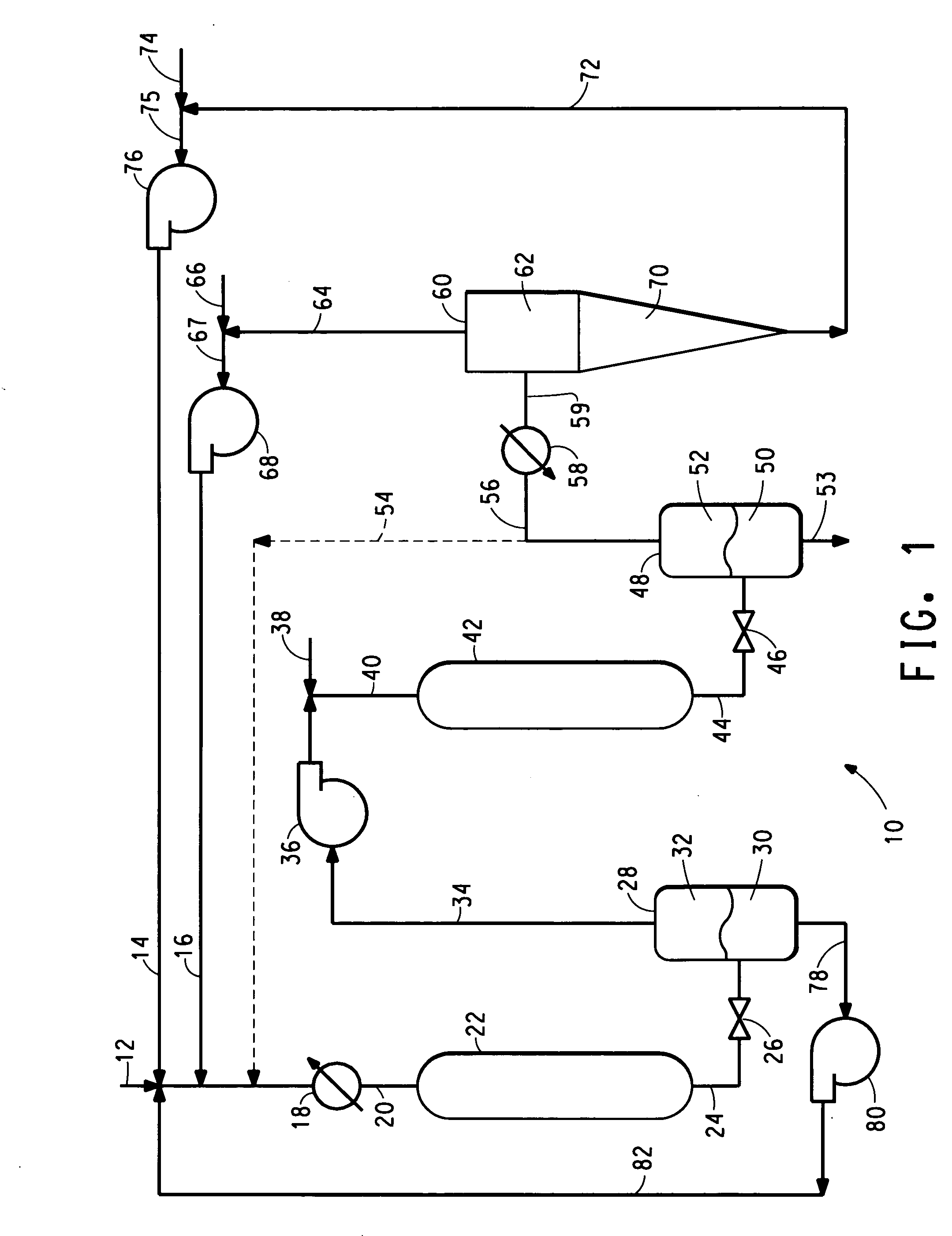Process for the production of y-methyl-a-methylene-y-butyrolactone from reaction of levulinic acid and hydrogen with recycle of unreacted levulinic acid followed by reaction of crude y-valerolactone and formaldehyde, both reactions being carried out in the supercritical or near-critical fluid phase
a technology of y-methylamethylene and y-butyrolactone, which is applied in the field of process for the production of y-methylamethyleneybutyrolactone, can solve problems such as the yield of membl, and achieve the effect of reducing variable cost and capital cos
- Summary
- Abstract
- Description
- Claims
- Application Information
AI Technical Summary
Benefits of technology
Problems solved by technology
Method used
Image
Examples
examples
[0041] To simulate the effect of feeding product from the first reactor that has been depressurized to produce a low density phase material containing GVL and unreacted levulinic acid to the second reactor, a series of synthetic liquid feed samples containing varying amounts of levulinic acid were prepared and fed to a reactor (corresponding to second reactor 42), as described below. The feed samples were pressurized and heated to reaction conditions prior to their being introduced into the reactor. These experiments were conducted in a continuous fixed bed reactor consisting of a 0.38-inch o.d.×0.049-inch wall×11.5-inch long 316 stainless steel tube packed with catalyst. The reactor was heated by electrical band heaters mounted around an aluminum block enclosing the reactor. The reactor was charged with 2.0 g of 20% Rb / Engelhard KA-160 SiO2 granular catalyst. The reactant feed solution consisted of about 38 wt % gamma-valerolactone, with varying relative concentrations of levulinic...
PUM
 Login to View More
Login to View More Abstract
Description
Claims
Application Information
 Login to View More
Login to View More - R&D
- Intellectual Property
- Life Sciences
- Materials
- Tech Scout
- Unparalleled Data Quality
- Higher Quality Content
- 60% Fewer Hallucinations
Browse by: Latest US Patents, China's latest patents, Technical Efficacy Thesaurus, Application Domain, Technology Topic, Popular Technical Reports.
© 2025 PatSnap. All rights reserved.Legal|Privacy policy|Modern Slavery Act Transparency Statement|Sitemap|About US| Contact US: help@patsnap.com

